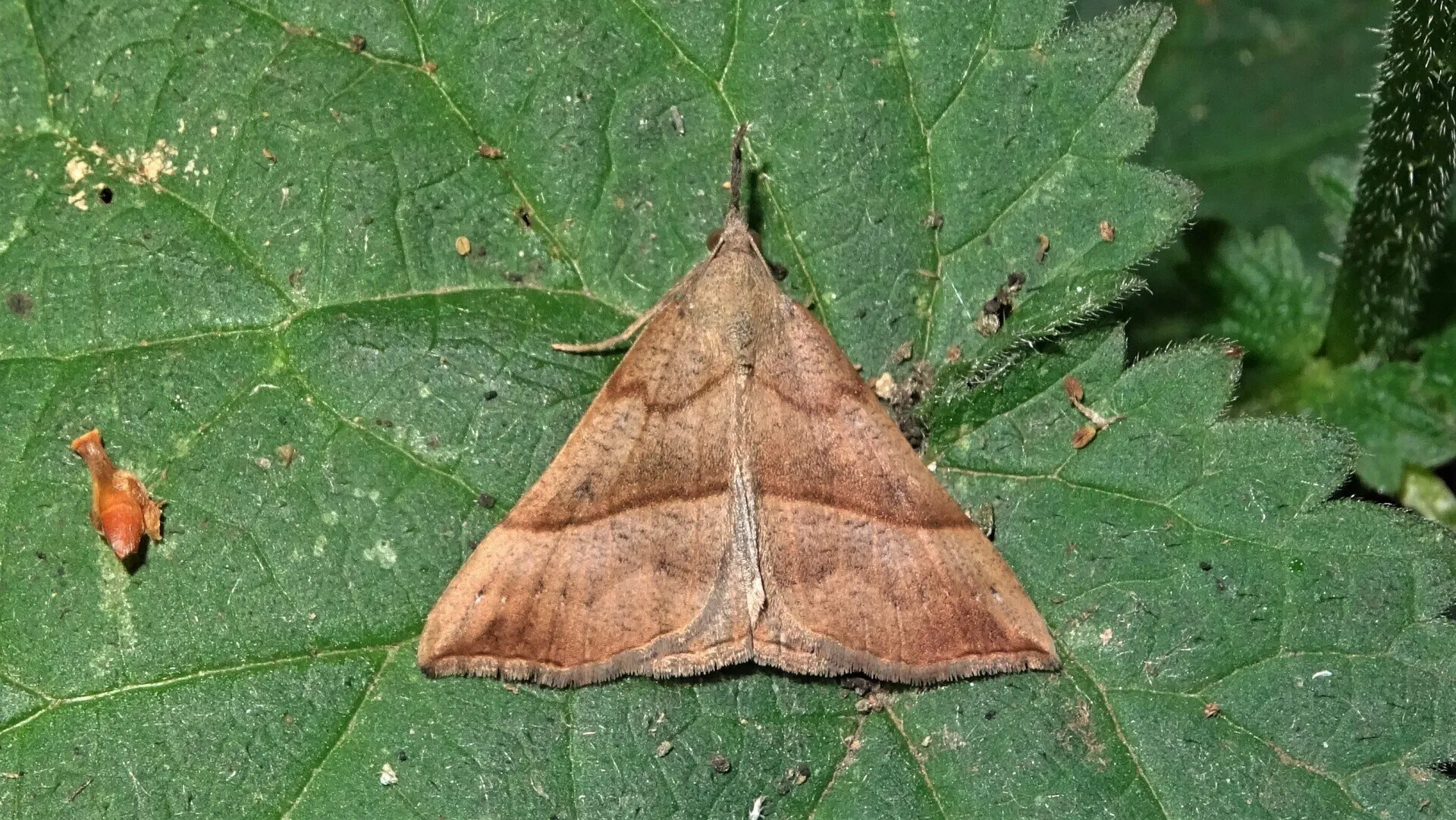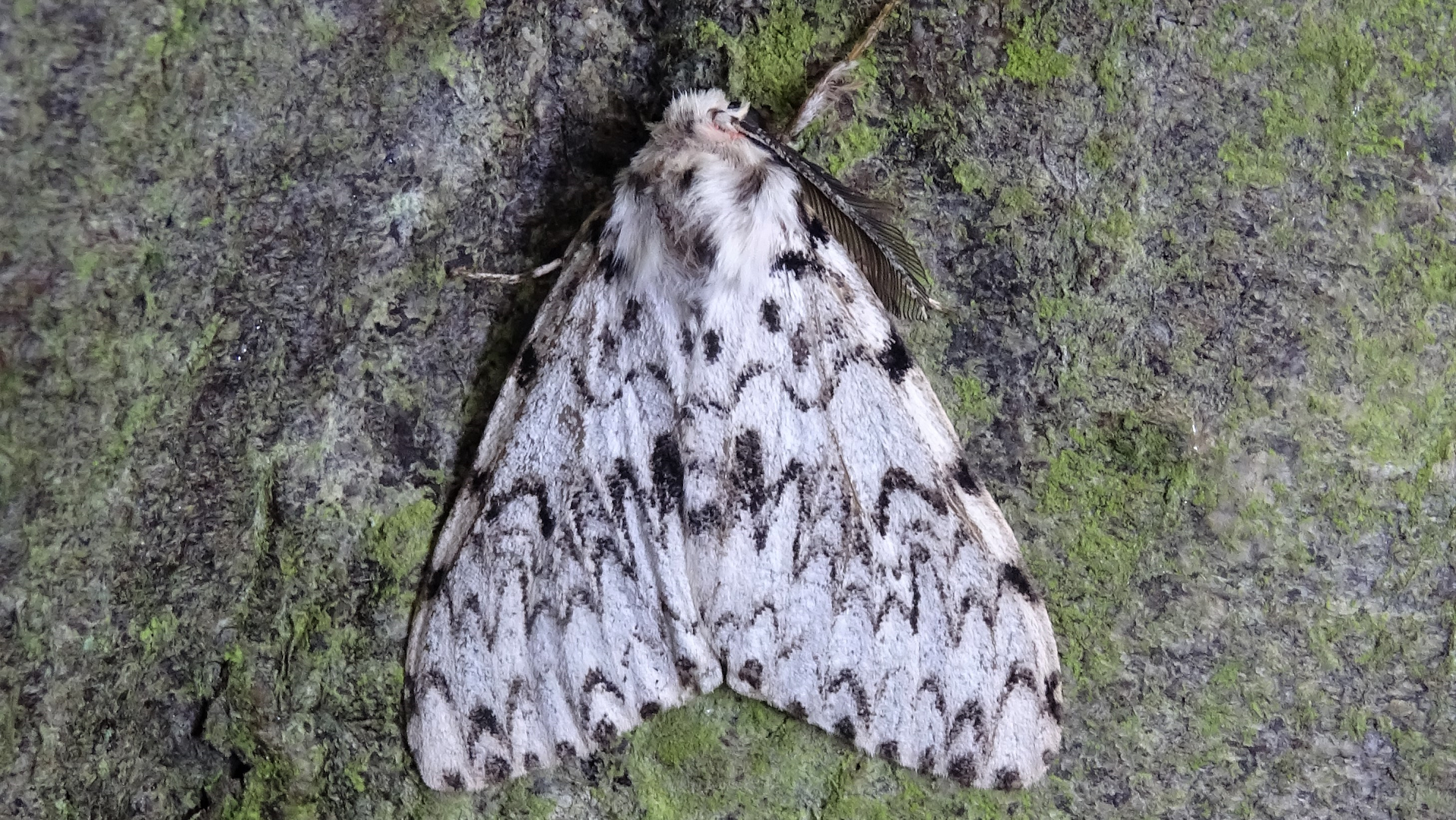Moths are a group of insects that includes all members of the order Lepidoptera that are not butterflies. They are an important part of the food chain providing a vital food source for birds and bats.
71.025
Buff-tip Phaera bucephala
This moth can be mistaken for a birch twig when at rest by which means it fools predators to leave it alone. It flies from May to July. Larval foodplants include Oak, Birch, Sallow and Hazel.

#
71-027
Chocolate-tip Clostera curtula
Chocolate-tip moths can be found in woodland, scrub and on hedgerows. Foodplants include Aspen, Poplar, Sallow and Willow.

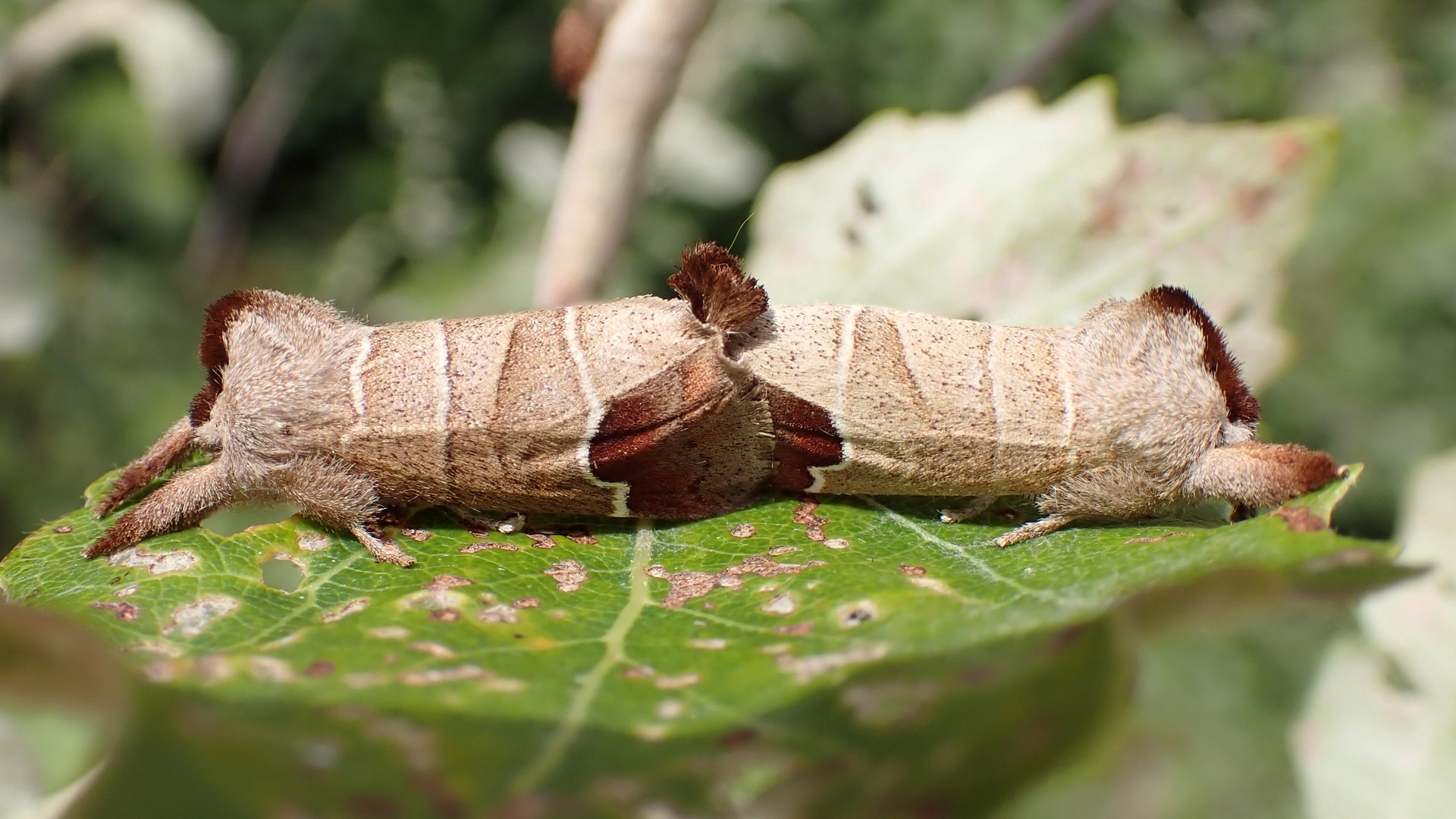
#
72.002
Straw Dot Rivula sericealis
Found in damp meadows and woodland from May to September. The larvae of this species feed on various grasses. It belongs to the family Erebidae, a diverse group with moths that greatly vary in shape, size and habits. Tussocks, Ermines, Tigers, Footman moths, Snouts, Fan-foots, Blacknecks and Underwings all belong to this family.
#
72.011
Gypsy Moth Lymantria dispar
Once thought to have gone extinct in Britain from about 1900. It is now establishing itself again in south-east England. Foodplants are Bog-myrtle and Creeping Willow, however eggs have been found on Oak and other broadleaf trees so those are probably used as foodplants too.
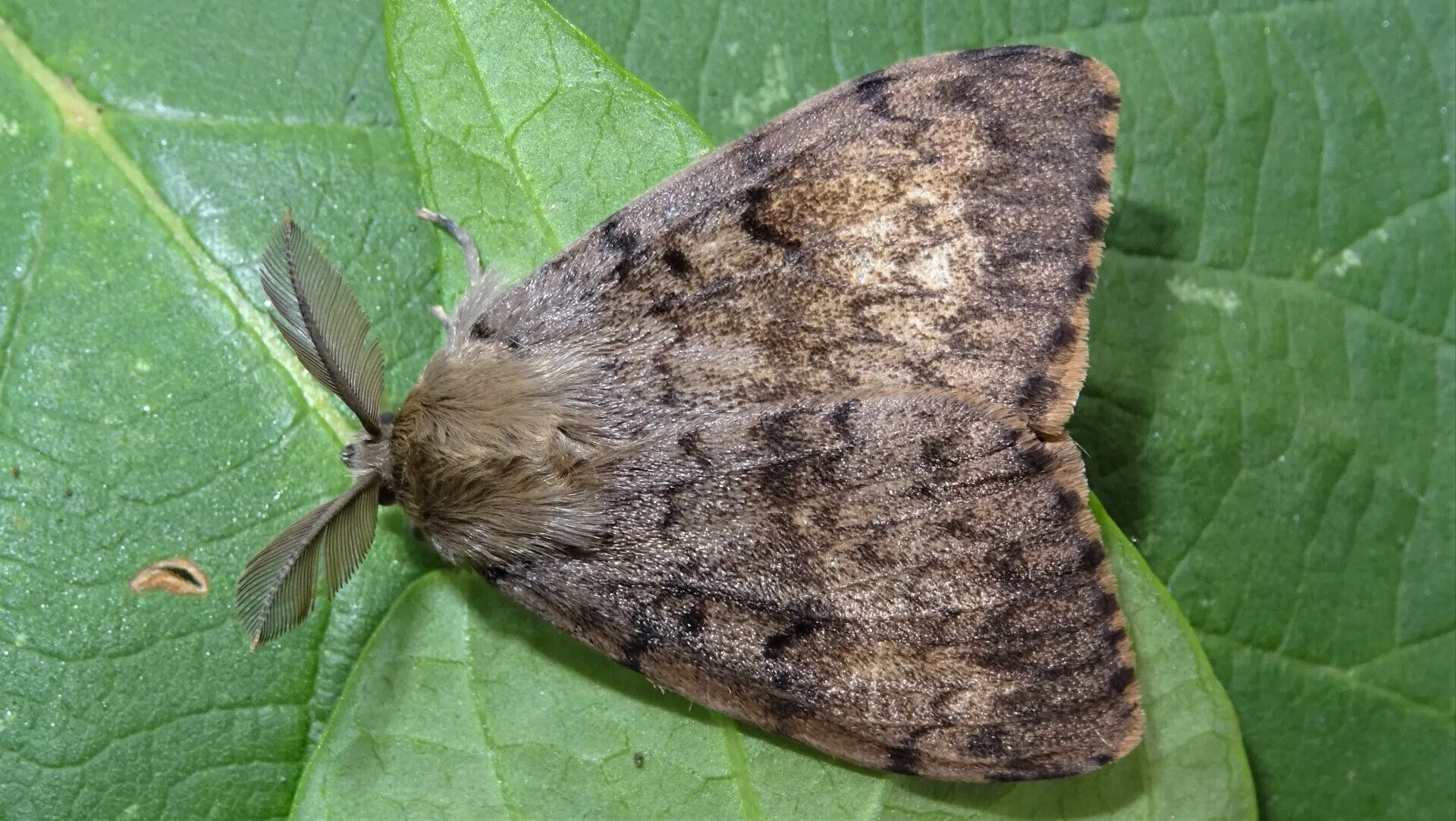
#
72.013
Yellow-tail Euproctis similis
Yellow-tails fly during July and August. The adults have a yellow or orange tip to the abdomen. The larvae are found on various broad-leaved trees and shrubs.


#
72.015
Pale Tussock Calliteara pudibunda
Flies in May and June frequenting hedgerows, woodland and scrub. It rests with its very hairy front legs stretched forward. The larvae are seen during Autumn.
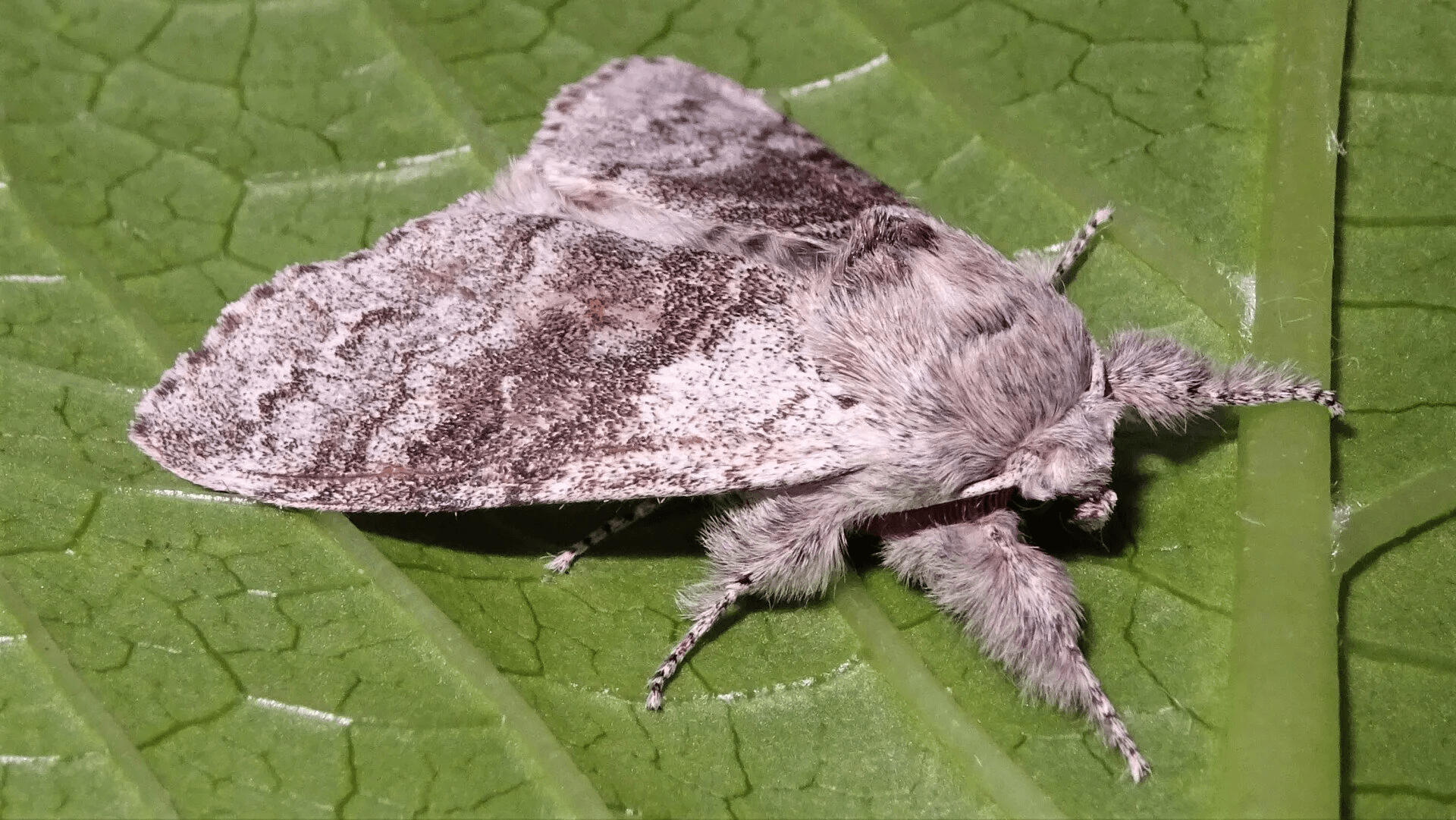
#
72.017
Vapourer Orgyia antiqua
Males fly from June until September. They are brown with a large white spot on each forewing. Females are almost wingless and normally remain on the cocoon from which they emerge. Strands of silk from a female's cocoon can often be seen underneath the eggs.
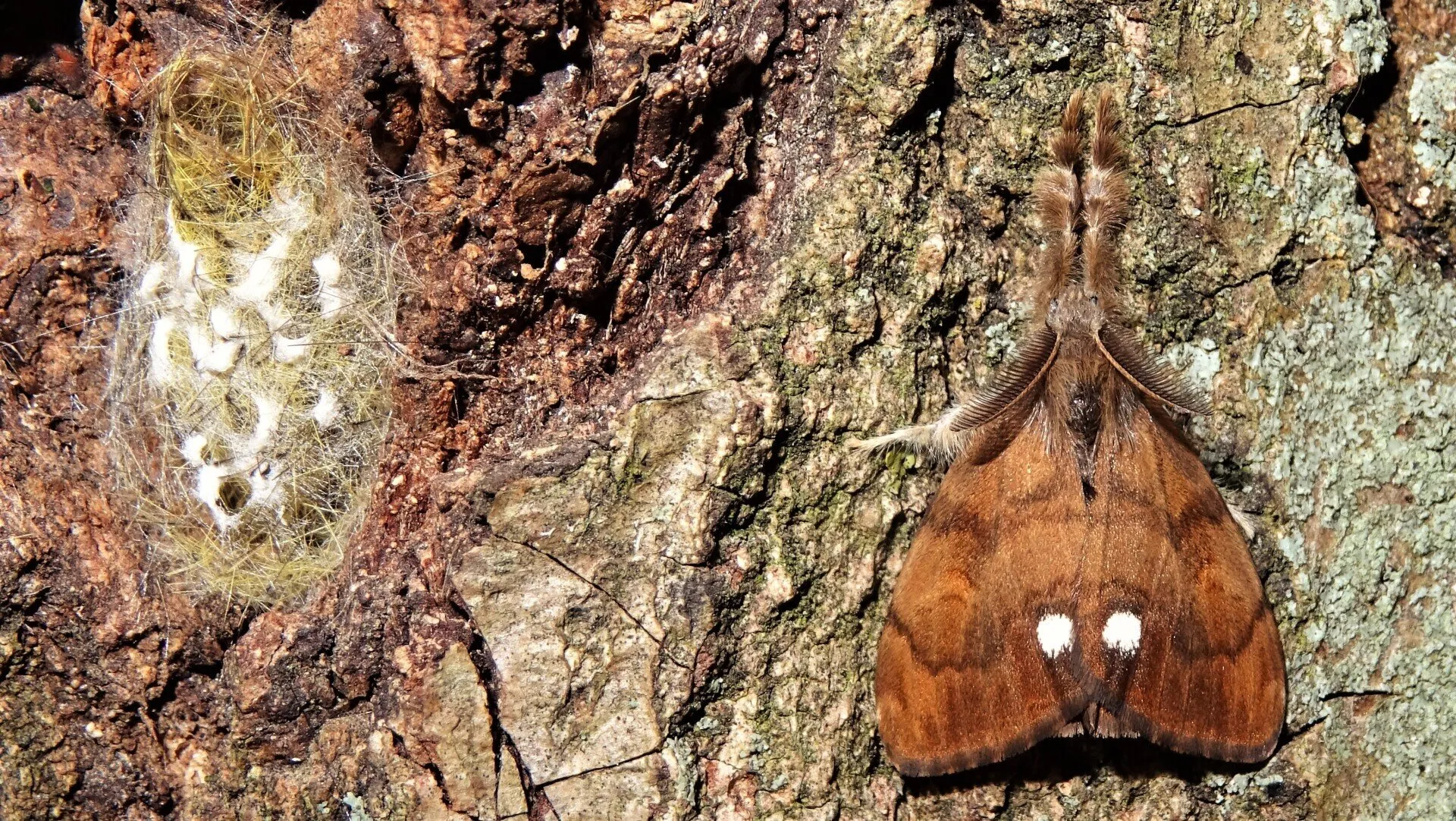
#
72.019
Buff Ermine Spilosoma lutea
Buff Ermines fly from May to July. This species has buff wings with variable dark markings. The larvae feed on various herbaceous plants.
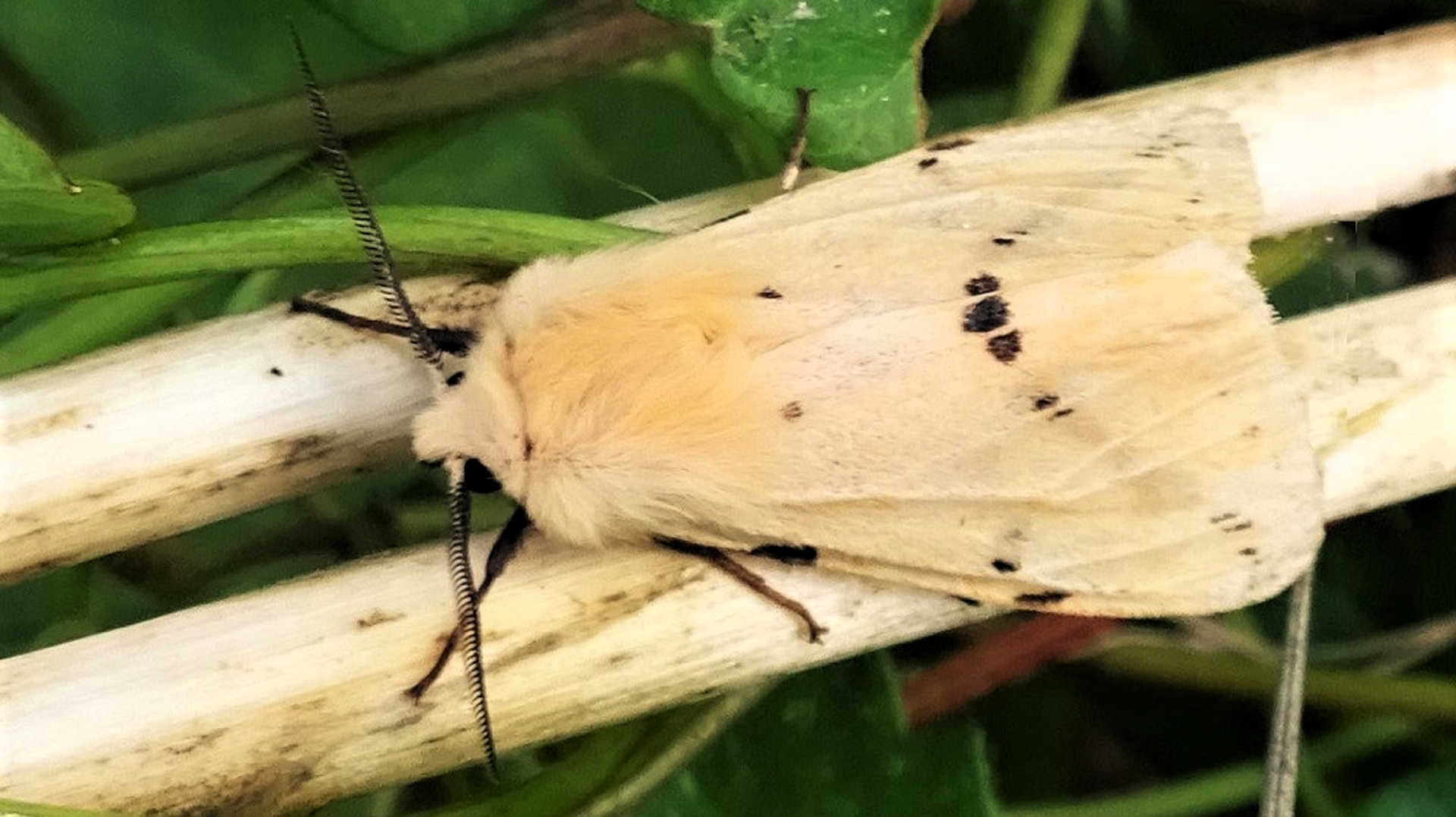
#
72.020
White Ermine Spilosoma lubricipeda
The White Ermine flies from May to July. Its larvae feed on nettles and dock.
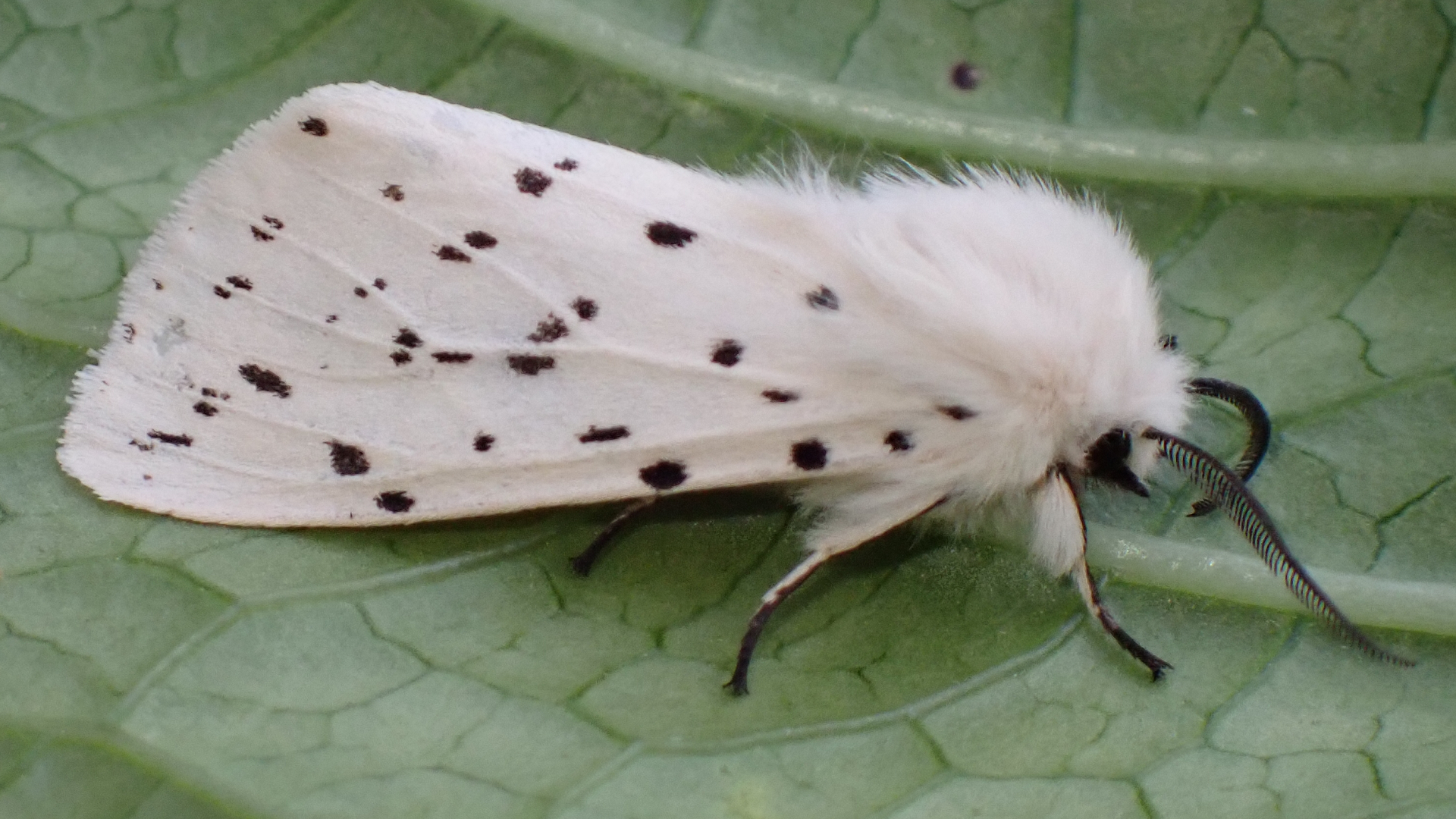

#
72.022
Muslin Moth Diaphora mendica
The Muslin Moth flies from April to June. Males are nocturnal and females diurnal. Males are light brown; females are white. Both sexes are speckled with black. The larvae feed on herbaceous plants.
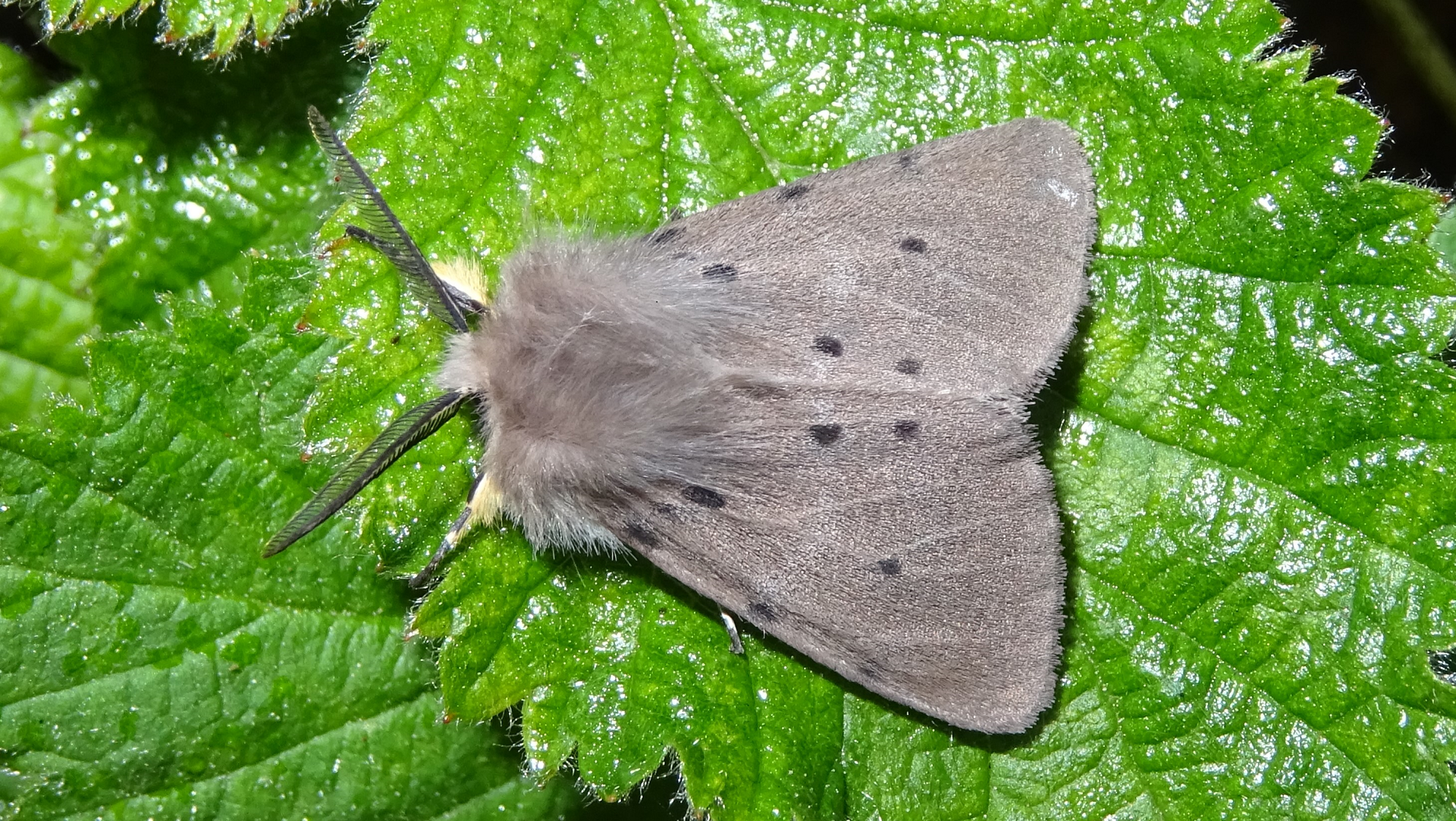
#
72.024
Ruby Tiger Phragmatobia fuliginosa
The Ruby Tiger flies from April to September. It is a reddish-brown moth with bright red and black-dotted abdomen. The larvae feed on herbaceous plants.

#
72.026
Garden Tiger Arctia caja
The Garden Tiger is a declining species that mostly flies at night during July and August. The larvae feed on herbaceous plants such as Nettles, Docks and Burdocks.
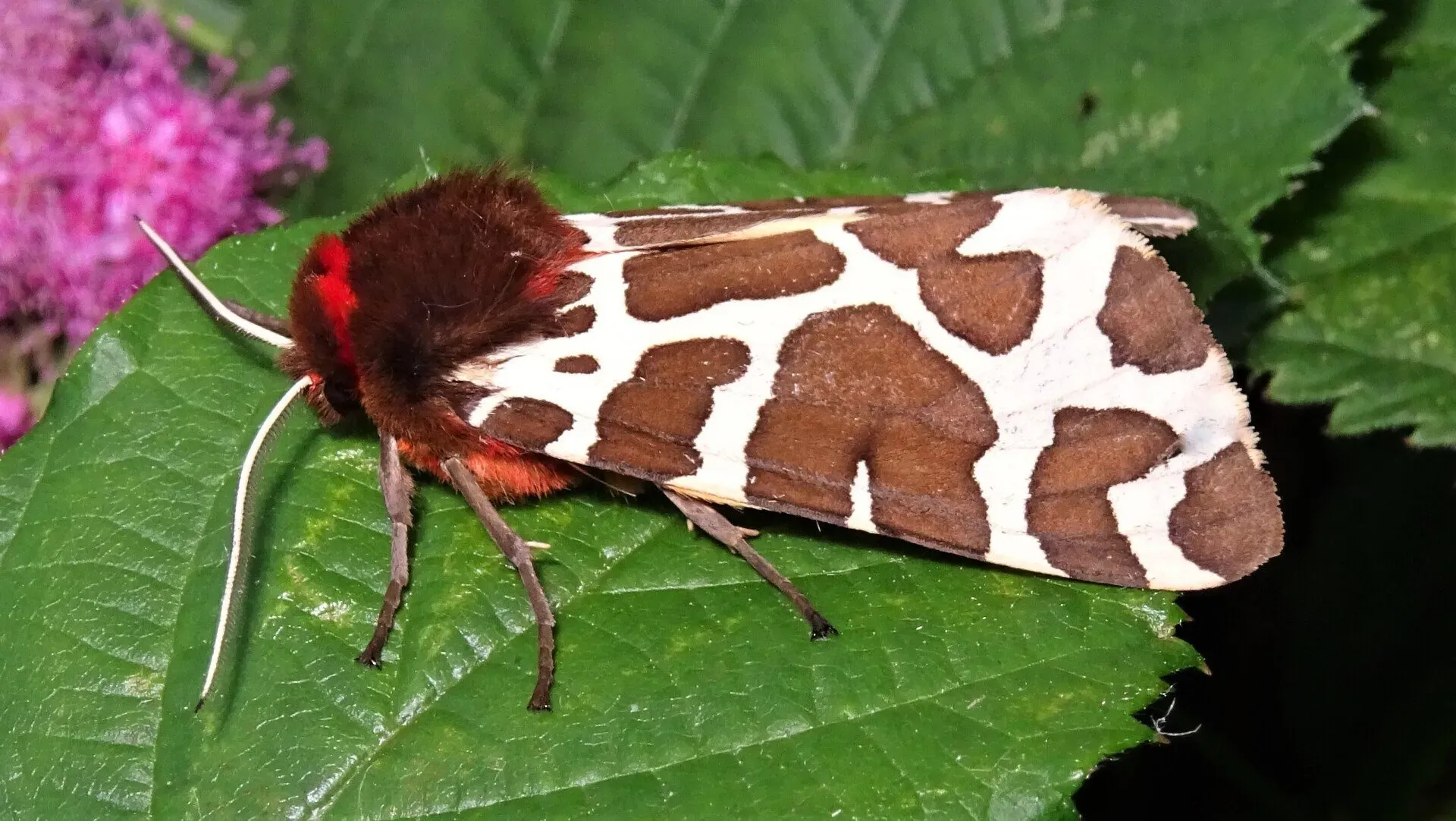
#
© hainaultforest.net. All rights reserved.



